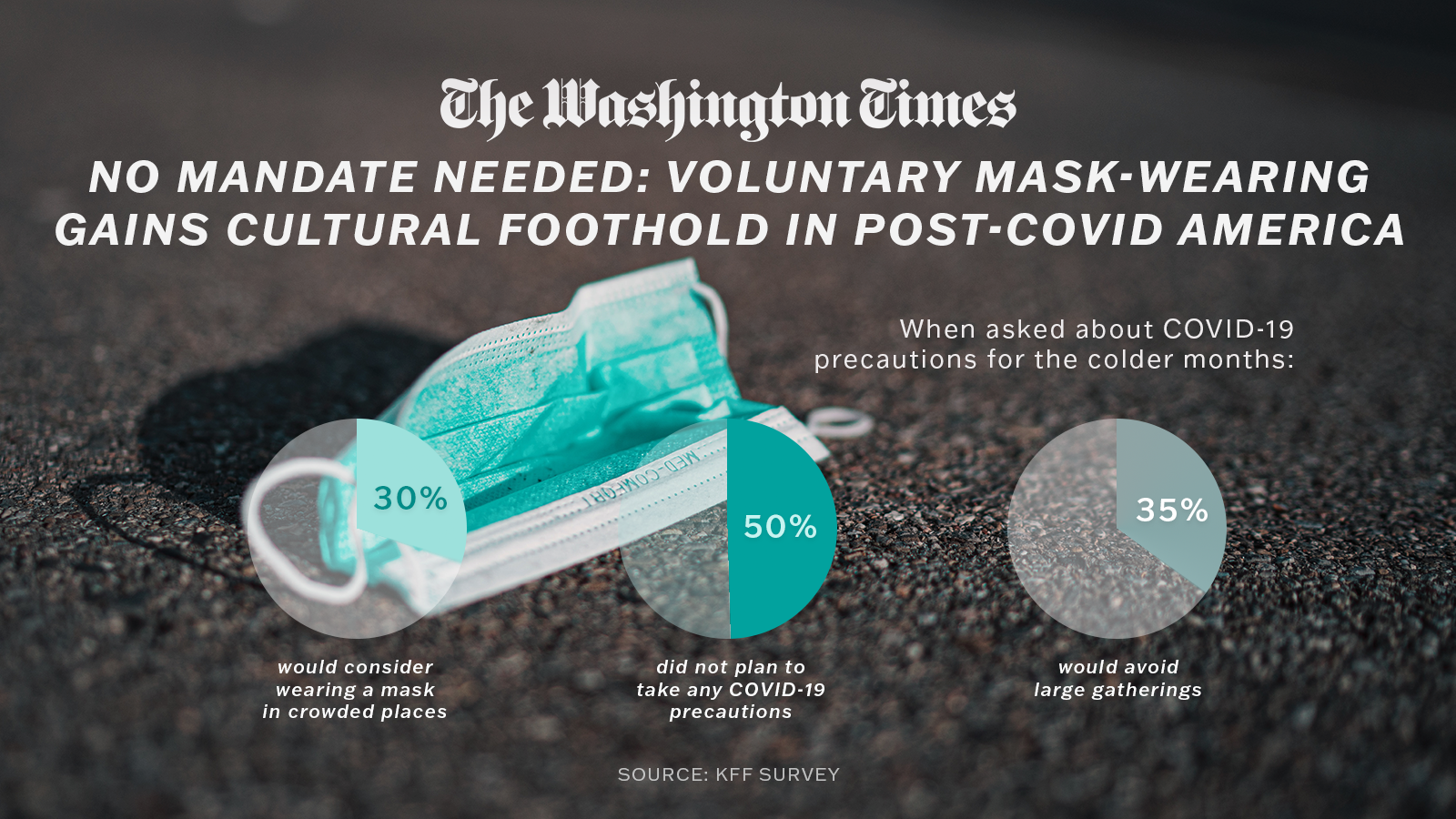The American population is looking more like Asians, with voluntary face masking as people go about their daily routines.
Rates of COVID-19 are manageable, normal life has resumed and mandates are gone, with few exceptions at discrete businesses or schools. Yet masks have gained a foothold in American society, a remarkable change after face coverings sparked public spats and questions about cultural acceptance.
“Masks are at least acceptable, even though they are not widely employed,” said William Schaffner, an infectious diseases specialist at Vanderbilt University. “At the moment, there’s a segment of the population that is very interested in health, very interested in prevention. I think they tend to be older.”
Mask use is not as ubiquitous as it was at the height of the COVID-19 crisis in 2020 and 2021. Still, it is not unusual to see a smattering of people wearing masks at grocery stores, at indoor concerts or on commuter trains.
Ray Meeks regularly wears a black mask with his green cap and fluorescent jacket as he works as a crossing guard at a busy intersection in Maplewood, New Jersey. He caught COVID-19 in 2021 and would like to avoid a repeat.
“It wasn’t nice,” Mr. Meeks said. “I’m 70 years old and, you know, I guess it’s easy for my immune system to be compromised.”
A KFF survey taken this month found that 30% of Americans would consider wearing masks in crowded places when asked about COVID-19 precautions for the colder months.
Mask-wearing ranked second only to avoidance of large gatherings, at 35%, though half of respondents said they did not plan to take any COVID-19 precautions this fall or winter.

Cloth and medical-grade masks were common before the pandemic in parts of the world. Subway riders in South Korea and Japan donned masks as a courtesy if they started to feel sick.
Yet face coverings were rare in the U.S. before the coronavirus hit, except in surgical rooms and dentist offices or among patients trying to avoid infection in public while undergoing treatment.
Dr. Schaffner said Americans’ adoption of masks is “quite remarkable.”
“Pre-COVID, masks were used by health care workers in hospital settings, in medical care settings. That was understood, but not by the general public. Now, I think there’s more acquaintance,” he said. “Certainly, in segments of the population, there is a sense that masks are useful in protecting one’s self beyond COVID — flu, RSV and other viruses.”
The share of Americans who told KFF that they are willing to wear masks is roughly equal to those who said they would consider face coverings during the threat of a “tripledemic” last year from COVID-19, flu and RSV, a common virus that can be harmful to infants and seniors.
Canada’s health ministry tells residents that “masks are still in style this season.”
“Wearing a well-fitting mask is one measure you can use to help prevent getting or spreading a respiratory infectious disease,” it posted on social media.
Mask use may differ by geographic region. Rural and conservative areas are more likely to balk at masks, which have become a polarizing symbol of government mandates and potential overreach.
Opponents say masks didn’t prevent the spread of COVID-19, and former President Donald Trump has campaigned this year on a vow to prevent mask mandates from reappearing. “I will not give one penny to any school that has a vaccine mandate or a mask mandate,” Mr. Trump has said.
Conflicting studies about whether masks work and which types to wear add to the confusion.
“I think people generally agree that masks are helpful but not perfect,” Dr. Schaffner said. “They are an additional layer of protection. It’s something you can do.”
Beyond COVID-19 fears, masks are common among patient populations, especially lung transplant recipients or children with cystic fibrosis. House Majority Leader Steve Scalise, Louisiana Republican, wears a mask on Capitol Hill because his immune system is vulnerable while he undergoes chemotherapy for blood cancer.
More broadly, “I think COVID has revealed how these masks can prevent infection and help prevent spreading infections,” said Panagis Galiatsatos, an assistant professor at Johns Hopkins School of Medicine. “I do hope they are here to stay as a kind of tool for the two objectives above. For instance, I wear masks when traveling because I don’t want to catch something that would ruin my travels.”
The persistence of mask-wearing is off-putting to some, though much of the controversy has subsided as requirements disappear.
The Metropolitan Opera and other large arts venues in New York dropped their mask mandates in October 2022, though a smattering of patrons still wear face coverings to performances.
“Audiences who wish to continue to wear masks are, of course, welcome to do so. We also continue to ask that if you are suffering from cold-like symptoms, you please stay home,” the opera house says on its webpage.
Mr. Meeks, the crossing guard, said nobody gives him a hard time about wearing a mask.
“All the parents are pretty cool with it,” Mr. Meeks said. “If it was something that was a distraction to the kids, they would actually let me know.”
For more information, visit The Washington Times COVID-19 resource page.
• Tom Howell Jr. can be reached at thowell@washingtontimes.com.




Please read our comment policy before commenting.